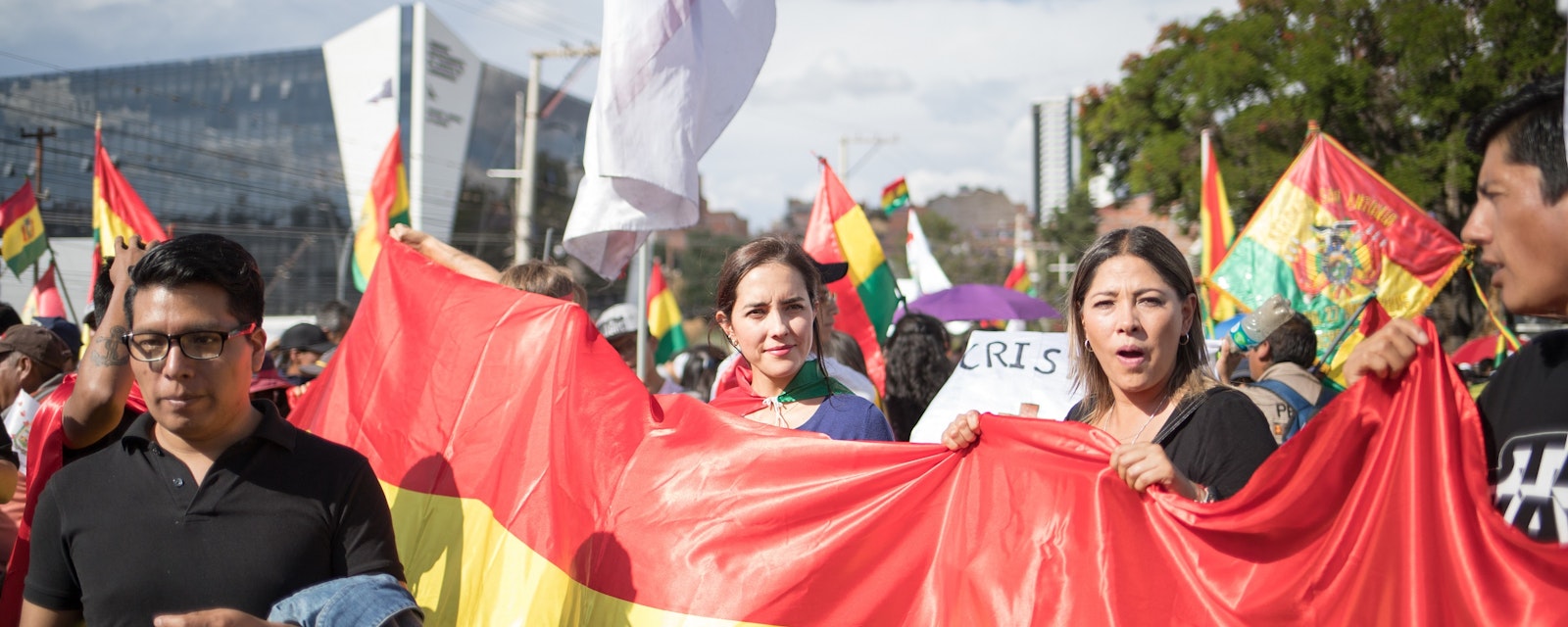The fall of Bolivia’s Evo Morales has strongly homegrown causes but shares common threads with recent upheaval in the region. Overlapping issues behind protests include inequality, lack of political renewal, and unmet expectations. The role of the military fits traditional patterns but it is too early to say what its effects will be. Regional politics will remain highly polarized into next year and probably beyond, though new centrists will claim they transcend binary politics.
The situation in Bolivia remains fluid and the horizon uncertain; Morales’ resignation was formalized on 12 November. However, the timing of the crisis – amid continuing protests in Chile, upheaval in Ecuador, recent political convulsion in Peru, and an imminent change in government in Argentina – warrants an examination of the commonalities, differences, and significance of the region’s current political juncture.
What regional tumult is not is what Diosdado Cabello, the Venezuelan regime strongman, likes to grandiloquently say it is: a “Bolivarian breeze” against neo-liberal orthodoxy. In fact, the end of Morales’ presidency is a reversal of what little “breeze” there still is in favor of Nicolas Maduro’s brand of economic self-destruction. Recent protests in the region have been triggered by specific, local issues: electoral fraud in Bolivia, the removal of fuel subsidies in Ecuador, and frustration with inequality of wealth and opportunity in Chile.
Deeper frustrations
This is not to deny that there are commonalities behind recent events. The most important is the existence of a deeper societal aquifer of frustration and discontent as gains made during the commodity boom have slowed or slipped backwards (e.g. Chile). In some cases, overspending in the boom years left unsustainable fiscal imbalances, and the cure of austerity has proven more unpopular than the original illness (e.g. Argentina and Ecuador).
Bolivia’s crisis is more about concern over creeping political authoritarianism than it is about the economy. Political frustrations certainly exist. Morales may be an extreme case of self-perpetuation in power, but the inability of regional leaders to know when to call it a day (Rafael Correa; Cristina Fernandez; Lula; Alvaro Uribe) reflects region-wide political frustration.
On-demand politics
Recent protests share other features. Social media may well be setting new standards for material and political expectations among increasingly connected – and therefore impatient – societies. That is truer of Chile than it is of Ecuador. Nonetheless, social media likely fanned protests in Chile and Bolivia by demonstrating Ecuador’s success in forcing a government U-turn. Whether Morales’ removal in Bolivia revives protests against elected dictatorships in Venezuela and Nicaragua will be something to watch over the coming days and weeks.
The violence problem
Breaking down protest dynamics also suggests that some on the Left (e.g. Correa) continue to be involved with extremist groups that operate on the fringes of the democratic game. All the recent unrest has involved minority groups weaponizing mostly peaceful mass movements with violence and arson – with opportunistic looting often added to the mix. In Chile and Ecuador, violent groups have attempted to destabilize sitting governments; Colombia can be vulnerable to violent protests. In Bolivia, radical leftism in the form of the Ponchos Rojos group is seemingly about to enter the crisis in defense of Morales. Slightly differently, in Argentina, the incoming administration is less comfortable with its own radical action groups.
Military involvement
Many on the Left would argue that violence has frequently erupted in response to heavy-handed suppression of protests and militarization; certainly, repression has exacerbated unrest. The role of the military is one of the features of recent upheaval, not just to reinforce overstretched police forces but as political adjudicators and defenders of the constitutional order. This is a traditional role for many militaries in the region. It may well show up political factionalism and the weakness of civilian institutions, but the significance of the military as arbiter can often only be truly judged once a transition has taken place or stability restored and it is clear what shape post-crisis politics has taken. Most militaries – with the exception of Venezuela – have no designs on power. However, exposing militaries to political crises carries risks. Bringing out the military in the way that Peru’s Martin Vizcarra or Ecuador’s Lenin Moreno have both recently done risks opening the door to their regular use by governments that find themselves under pressure or in need of legitimacy.
Exceptions but not oases
A valid question in the debate is why some countries have not suffered protests when they often face the same issues. Apart from a brief 24 hours of tension triggered by the suspension of congress last month, Peru has remained largely calm. The reason may lie in the fact that Peru has managed to successfully institutionalize its conflicts via an impeachment process (2018), robust investigations into political corruption by a largely independent judiciary, together with avenues for political renewal in 2020 and 2021. Argentina has opted for an alternation of governments just at the right time, similarly to Uruguay, which is poised to shift rightwards after a decade and a half under left-leaning Broad Front (FA) governments.
Polarization and its discontents
None of these issues – inequality, lack of political renewal, unmet expectations, violence, and militarization – are easy to resolve, particularly amid regional economic stagnation. Political polarization is likely to remain at heightened levels, most obviously in Argentina and in Brazil following Lula’s release from jail, but perhaps too in Bolivia where Morales is already positioning himself for an eventual comeback. A sagging center-ground opens the door to political outsiders claiming to transcend the worn-out Left-Right dichotomy. In Peru, which has been susceptible to anti-establishment figures, there are already a number of putative political outsiders readying for 2021. El Salvador’s 38-year-old Nayib Bukele is an incumbent president who positions himself as beyond the old ideologies; he is also more social media-savvy than his peers. Bukele’s management of expectations and public impatience could well be a bellwether of how to manage the emerging on-demand politics.




